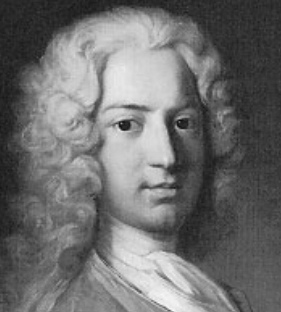March 25, 2013
 by: Tami O’Connor
by: Tami O’Connor
The sun is our primary source of ultraviolet radiation, however, there are a number of artificial sources of UV light including black lights, tanning beds and mercury vapor lamps. Ultraviolet radiation is usually considered to be a bad thing for very good reasons.
Generally speaking, there are three types of UV radiation here on Earth: UVA, UVB and UVC. Though the most destructive, UVC is almost never seen in nature because the earth’s atmosphere absorbs all of it. Though less destructive, overexposure to UVB can lead to all kinds of maladies including sunburn, some forms of skin cancer and cataracts. Read the rest of this entry »
 1 Comment |
1 Comment |  Biology, Earth Science, Elementary level, energy, experiments, High School level, Middle School level | Tagged: electromagnetic spectrum, parent friendly, PBL, phenomenon based learning, phenomenon-based science, science, sunscreen, ultraviolet, UV radiation activity |
Biology, Earth Science, Elementary level, energy, experiments, High School level, Middle School level | Tagged: electromagnetic spectrum, parent friendly, PBL, phenomenon based learning, phenomenon-based science, science, sunscreen, ultraviolet, UV radiation activity |  Permalink
Permalink
 Posted by Tami O'Connor
Posted by Tami O'Connor
March 1, 2013
 by: Norm Barstow
by: Norm Barstow
This is a guide on how to make a Leyden Jar that makes awesome sparks with materials you may even find in your house. It’s inexpensive, basically harmless and fun.
Read the rest of this entry »
 Leave a Comment » |
Leave a Comment » |  experiments, High School level, Middle School level, Physics, static electricity | Tagged: capacitor, DIY, film canister activities, generators, homeschool, leyden jar |
experiments, High School level, Middle School level, Physics, static electricity | Tagged: capacitor, DIY, film canister activities, generators, homeschool, leyden jar |  Permalink
Permalink
 Posted by Tami O'Connor
Posted by Tami O'Connor
February 25, 2013
 Look, Mom, No Wheels! Building a Hovercraft Science Project
Look, Mom, No Wheels! Building a Hovercraft Science Project
by: Norm Barstow
The first practical design of the hovercraft was completed in the late 1950’s by British engineer, Sir Christopher Cockerell. Since then, the continued development of this invention has been ongoing, and currently, the hovercraft is being used commercially, by the military, and for personal use. Teachers have been constructing versions of the hovercraft using balloons, film canisters and flat materials in classrooms for years.
Read the rest of this entry »
 1 Comment |
1 Comment |  Elementary level, experiments, Middle School level, Physics | Tagged: air pressure, DIY, film canister activities, film canisters, friction, homeschool activity, hovercraft, PBL, phenomenon based learning, phenomenon-based science, science, Sir Christopher Cockerell, STEM |
Elementary level, experiments, Middle School level, Physics | Tagged: air pressure, DIY, film canister activities, film canisters, friction, homeschool activity, hovercraft, PBL, phenomenon based learning, phenomenon-based science, science, Sir Christopher Cockerell, STEM |  Permalink
Permalink
 Posted by Tami O'Connor
Posted by Tami O'Connor
January 14, 2013
 We Water Molecules Stick Together! | Surface Tension Demonstrations
We Water Molecules Stick Together! | Surface Tension Demonstrations
by: Tami O’Connor
I am a believer that observing discrepant events burns concepts into students’ memories far longer than simply reading the facts of the lesson from a text book. A few years ago I was designing a unit on surface tension. Because so many awesome hands-on activities deal with this topic, my greatest problem was picking and choosing! In this blog, I will describe one of my students’ favorite surface tension demonstrations. It teaches about surface tension and capillary action.
Read the rest of this entry »
 5 Comments |
5 Comments |  Elementary level, experiments, Middle School level, Physics | Tagged: capillary action, discrepant event, PBL, phenomenon based learning, phenomenon-based science, science, surface tension, water experiments |
Elementary level, experiments, Middle School level, Physics | Tagged: capillary action, discrepant event, PBL, phenomenon based learning, phenomenon-based science, science, surface tension, water experiments |  Permalink
Permalink
 Posted by Tami O'Connor
Posted by Tami O'Connor
November 25, 2012
 by: Tami O’Connor
by: Tami O’Connor
A few weeks ago my daughter, a new fifth grade teacher, asked me to come into her school to present a hands-on science lesson on Bernoulli’s Principle. Nothing delights me more than working with kids in a classroom. After 16 years of teaching, it’s hard to be away from it. At first I was unsure what I was going to bring in. I have so many really neat activities at my disposal that it is difficult to select just one. I finally narrowed it down to activities dealing with air pressure, which is part of their curriculum (always a plus!).
 As I rummaged through the office, I unearthed my supply of funnels, flex straws, and ping pong balls and decided that Daniel Bernoulli would be my guest of honor that day. When I started my lesson, I blew up a balloon and talked about air and its properties. Inviting comments, I discovered that they had some very interesting background knowledge, and most of it was correct… Read the rest of this entry »
As I rummaged through the office, I unearthed my supply of funnels, flex straws, and ping pong balls and decided that Daniel Bernoulli would be my guest of honor that day. When I started my lesson, I blew up a balloon and talked about air and its properties. Inviting comments, I discovered that they had some very interesting background knowledge, and most of it was correct… Read the rest of this entry »
 4 Comments |
4 Comments |  Elementary level, experiments, Middle School level, Physics | Tagged: air pressure, Bernoulli's Principle, PBL, phenomenon based learning, phenomenon-based science, science, science fair project |
Elementary level, experiments, Middle School level, Physics | Tagged: air pressure, Bernoulli's Principle, PBL, phenomenon based learning, phenomenon-based science, science, science fair project |  Permalink
Permalink
 Posted by Tami O'Connor
Posted by Tami O'Connor
 by: Tami O’Connor
by: Tami O’Connor


 Posted by Tami O'Connor
Posted by Tami O'Connor  by: Norm Barstow
by: Norm Barstow As I rummaged through the office, I unearthed my supply of funnels, flex straws, and ping pong balls and decided that Daniel Bernoulli would be my guest of honor that day. When I started my lesson, I blew up a balloon and talked about air and its properties. Inviting comments, I discovered that they had some very interesting background knowledge, and most of it was correct…
As I rummaged through the office, I unearthed my supply of funnels, flex straws, and ping pong balls and decided that Daniel Bernoulli would be my guest of honor that day. When I started my lesson, I blew up a balloon and talked about air and its properties. Inviting comments, I discovered that they had some very interesting background knowledge, and most of it was correct…